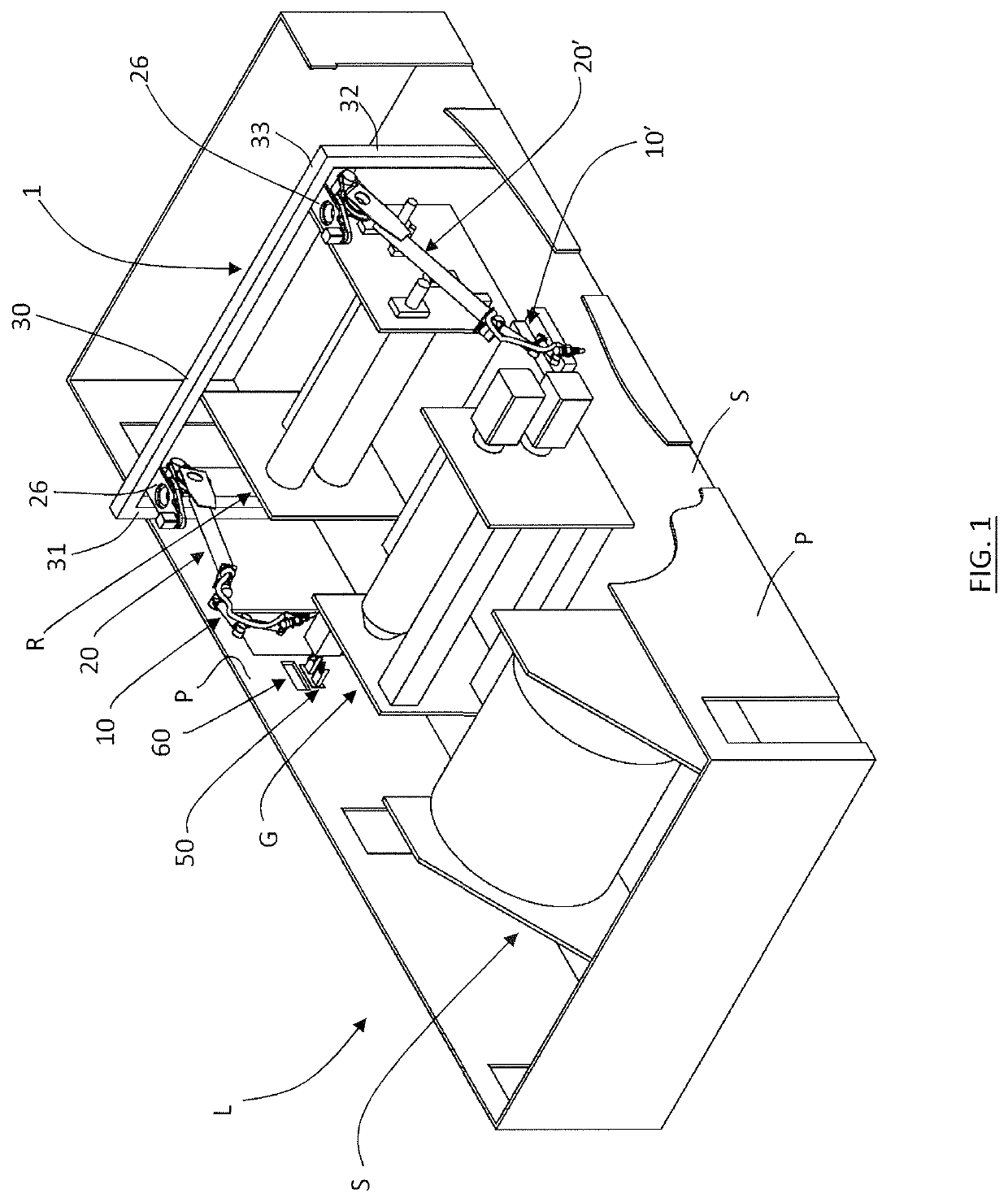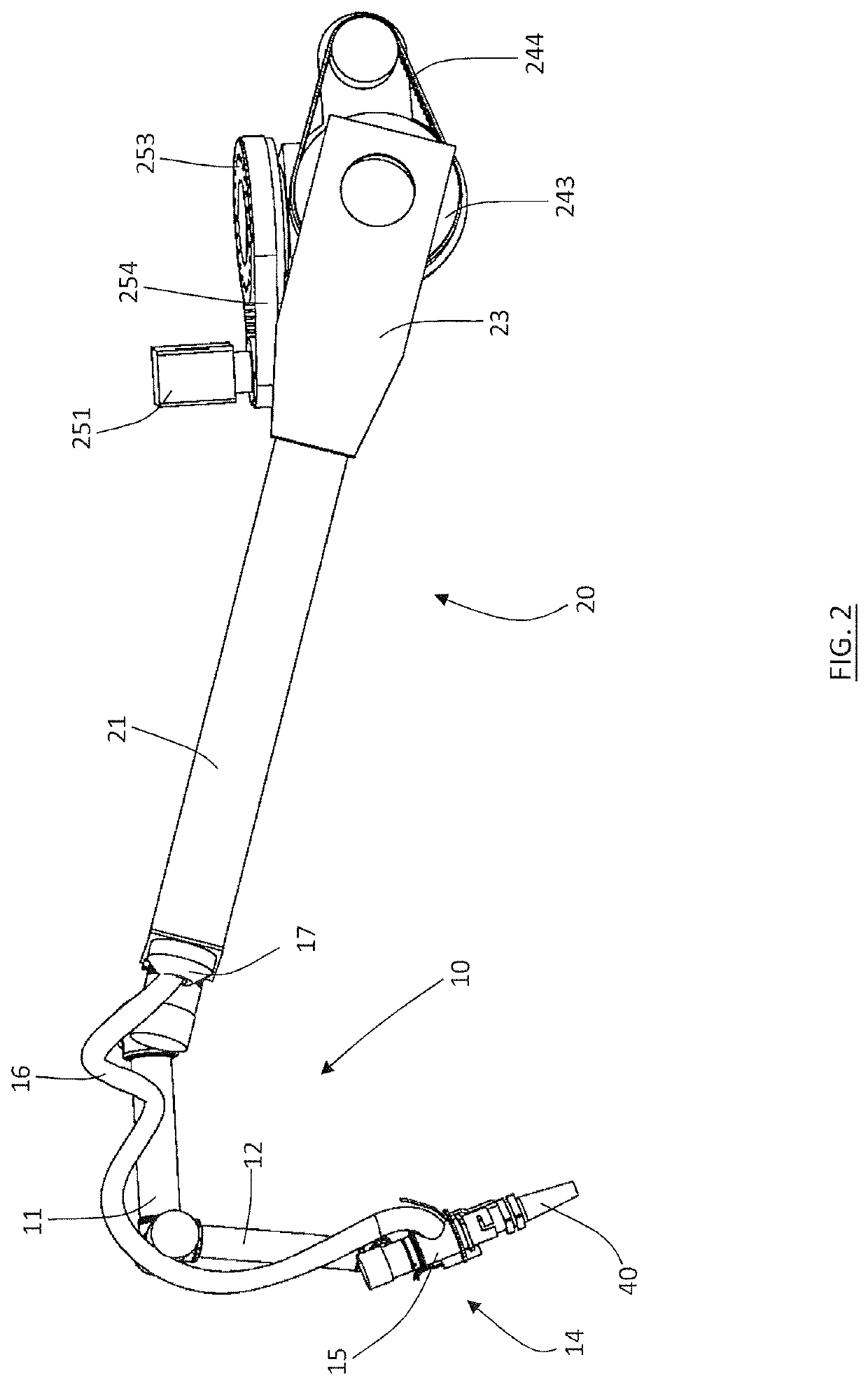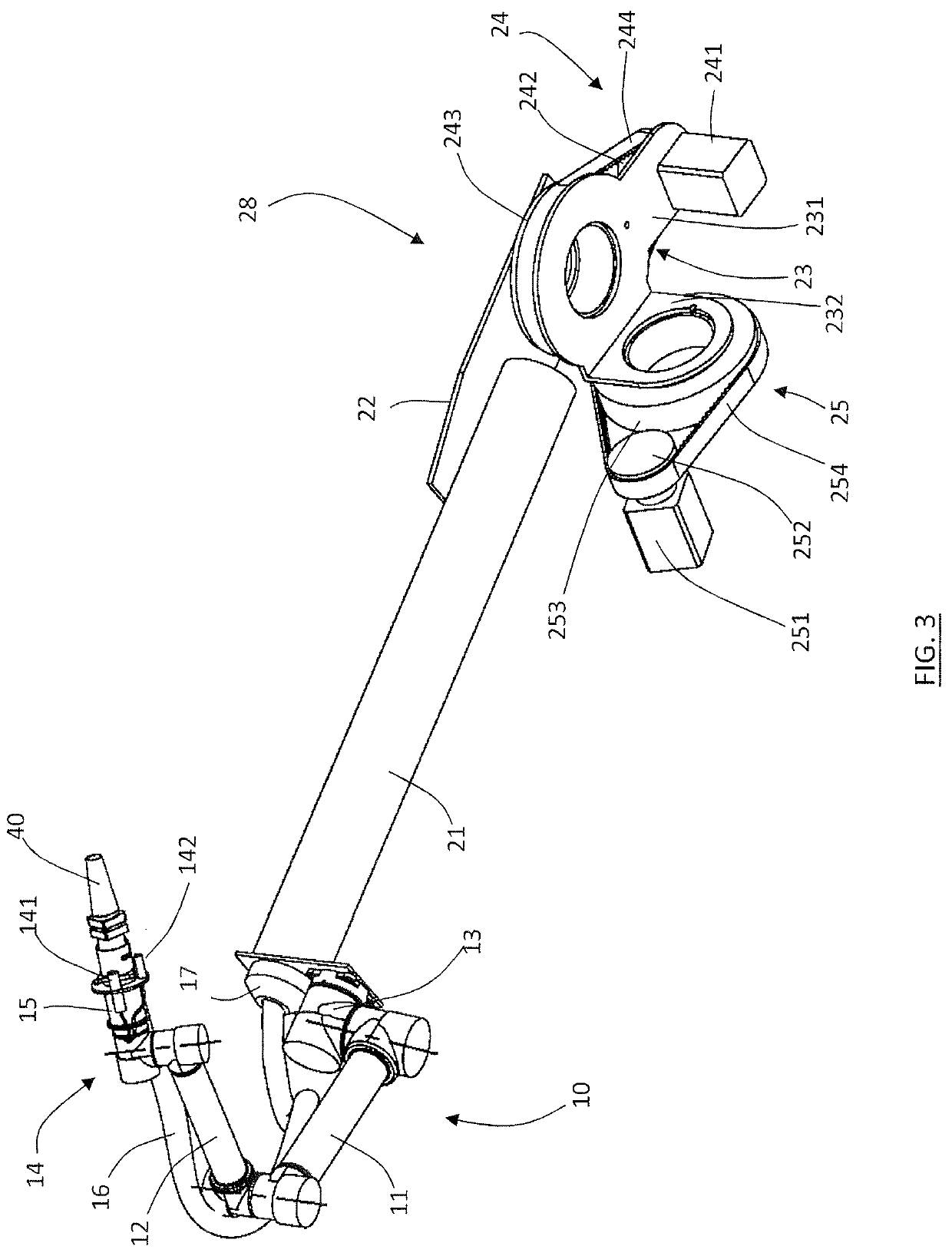Apparatus for Cleaning Industrial Plants
a technology for industrial plants and apparatus, applied in the direction of manipulators, paper-making machines, textiles and paper, etc., can solve the problems of high energy expenditure, high cost, and inefficiency of machinery and production stops for cleaning operations, and achieve the effect of reducing or eliminating
- Summary
- Abstract
- Description
- Claims
- Application Information
AI Technical Summary
Benefits of technology
Problems solved by technology
Method used
Image
Examples
Embodiment Construction
[0040]With reference to the aforementioned figures, it is below described an exemplary embodiment of an apparatus for cleaning industrial plants according to the present invention, installed in a line for converting tissue to obtain toilet paper or towels.
[0041]With reference to FIG. 1, a line for converting tissue, L, includes, for example, an unwinding device, S, for unwinding mother coils, an embossing machine, G, for obtaining reliefs by pressing between rollers, a rewinding boring machine, R, for making transversal perforations for obtaining the splits and for the rewinding process in diameters for the finished product, and an apparatus for cleaning, 1, according to the present invention, comprising two robotic arms, 10, 10′, and related moving elements consisting of oscillation assemblies, 20, 20′.
[0042]The portal 30 comprises two uprights, 31, 32, aligned transversely to the sides of the line L which support a crosspiece 33, which joins them transversely crossing the line L a...
PUM
 Login to View More
Login to View More Abstract
Description
Claims
Application Information
 Login to View More
Login to View More - R&D
- Intellectual Property
- Life Sciences
- Materials
- Tech Scout
- Unparalleled Data Quality
- Higher Quality Content
- 60% Fewer Hallucinations
Browse by: Latest US Patents, China's latest patents, Technical Efficacy Thesaurus, Application Domain, Technology Topic, Popular Technical Reports.
© 2025 PatSnap. All rights reserved.Legal|Privacy policy|Modern Slavery Act Transparency Statement|Sitemap|About US| Contact US: help@patsnap.com



